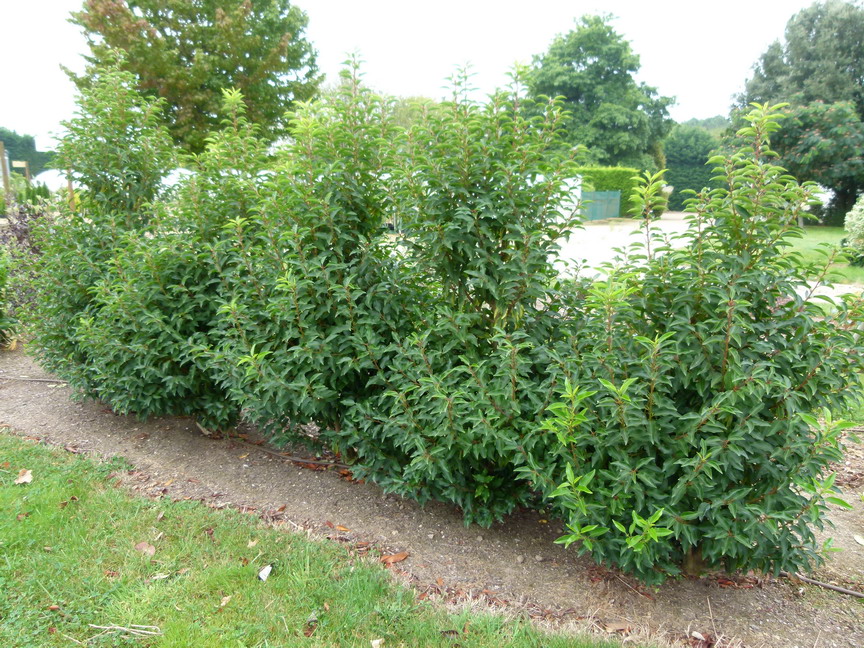
PRUNUS lusitanica Myrtifolia Laurier du Portugal Myrtifolia Pépinière en ligne de Kerzarc'h
Prunus lusitanica 'Myrtifolia' (Portuguese Laurel) Well known evergreen, tough as old boots. It has so many uses - we sell it as mushrooms, cones, mop heads and for hedging. As a tree it could reach 20 ft in 25 years. Please contact us for stock availability and sizes. Hardiness level Green Before you buy
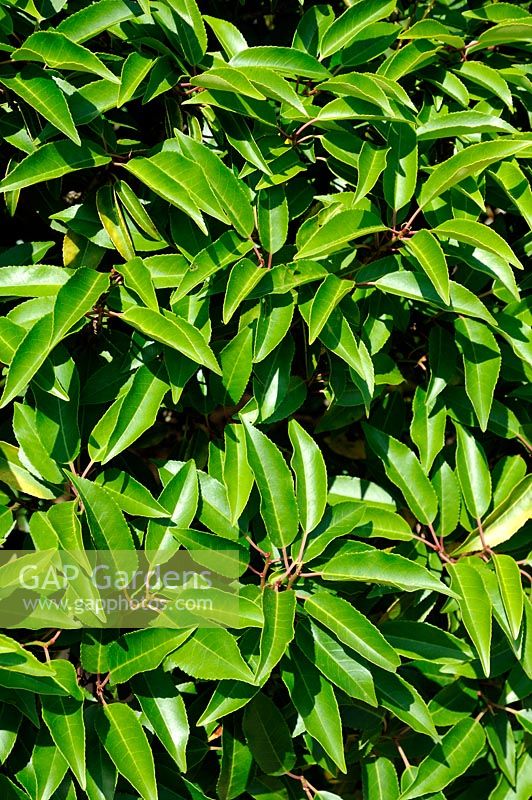
GAP Gardens Prunus lusitanica 'Myrtifolia' Portuguese Laurel Image No 0233893 Photo by
Portugal laurel (also known as Portuguese laurel) is a dense, rounded evergreen shrub with dark glossy green leaves. New growth will have red stems, eventually maturing to green. Small, white, fragrant flowers appear in early summer, followed by red berries turning to purple. Portugal laurel is a fast growing plant and can mature into heights.

Prunus Lusitanica Myrtifolia Portuguese Laurel GardenersDream
Portuguese Laurel Prunus Lusitanica is an elegant contemporary hedging plant with beautiful white flowers in summer and dark green foliage which you can clip to create a dense hedge. In the autumn, this evergreen shrub or tree produces attractive berries. The fruit offers both visual interest and serve as food for birds.
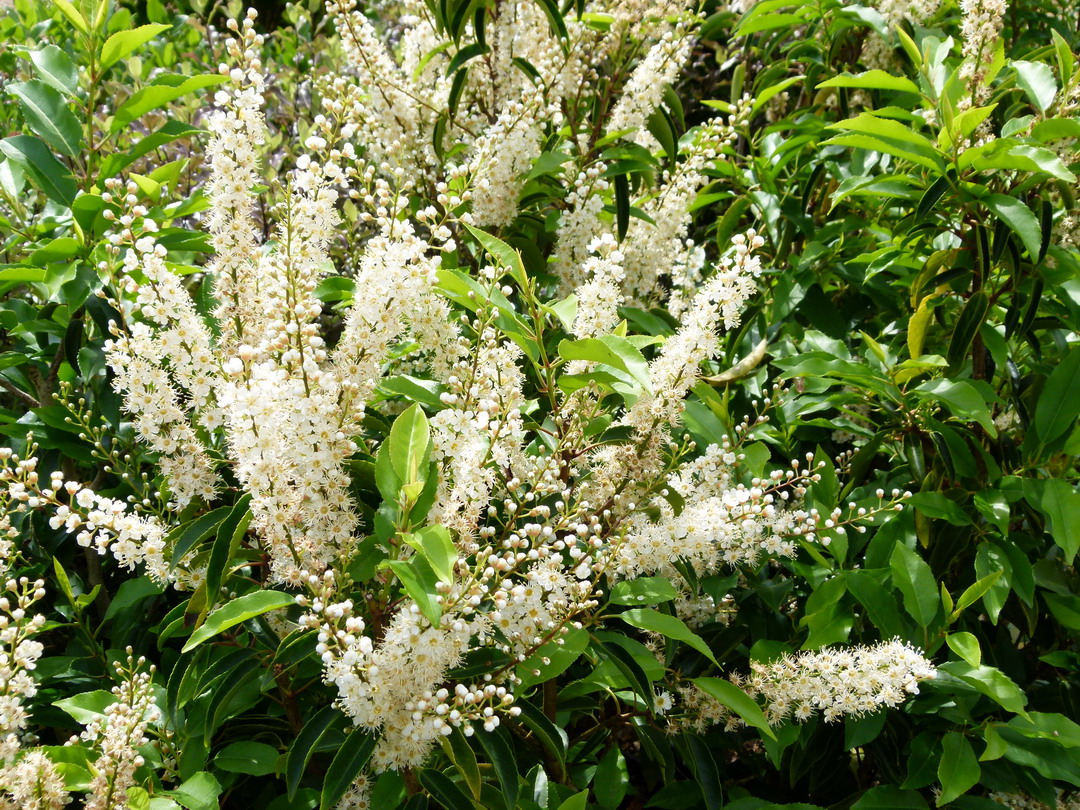
PRUNUS lusitanica Myrtifolia Laurier du Portugal Myrtifolia Pépinière en ligne de Kerzarc'h
Product Description PRUNUS LUSITANICA MYRTIFOLIA - Narrow-leaved Portuguese laurel Characteristics Prunus lusitanica 'Myrtifolia' is a narrow-leaved form of the ever-so-useful Portuguese laurel. An evergreen shrub with shiny, deep green leaves and wine-coloured stems, Portuguese laurel makes a nice dense hedge, or a sturdy shrub good for screening.

Portuguese Laurel hedge plants Wykeham Mature Plants
Portugal laurel. Synonyms. Symbol Scientific Name; PRLUM2: Prunus lusitanica L. f. myrtifolia (Mouill.) hort. ex Zabel: Prunus lusitanica L. Portugal laurel. Additional References; ARS Germplasm Resources Information Network (PRLU) Integrated Taxonomic Information System (PRLU) Jepson Interchange (University of California - Berkeley) (PRLU)

PRUNUS LUSITANICA 'MYRTIFOLIA' SmallLeaved Portugal Laurel Camson Creek Cedars
Portugal Laurel is such an evergreen and suitable plant for a hedge. It is also called Portuguese Laurel. Its botanic name is Prunus Lusitanica. The family of Portugal Laurel comprises of Prunus Lusitanica "Angustifolia", Prunus Lusitanica "Variegata", Prunus Lusitanica "Azorica". And Prunus Lusitanica "Angustifolia" is more common than others. 1.

Prunus lusitanica 'Angustifolia' Portuguese Laurel 'Myrtifolia' 20 Arundel Arboretum
Portuguese laurel (Prunus lusitanica) is the hedging shrub that gardening legend Monty Don called 'superior in every way' to the cherry (or English) laurel, its main rival for hedge glory.Still, if you own or are planting a Portuguese laurel hedge, this doesn't mean it'll sprout up whatever you do - some forward planning and a little thought is needed.
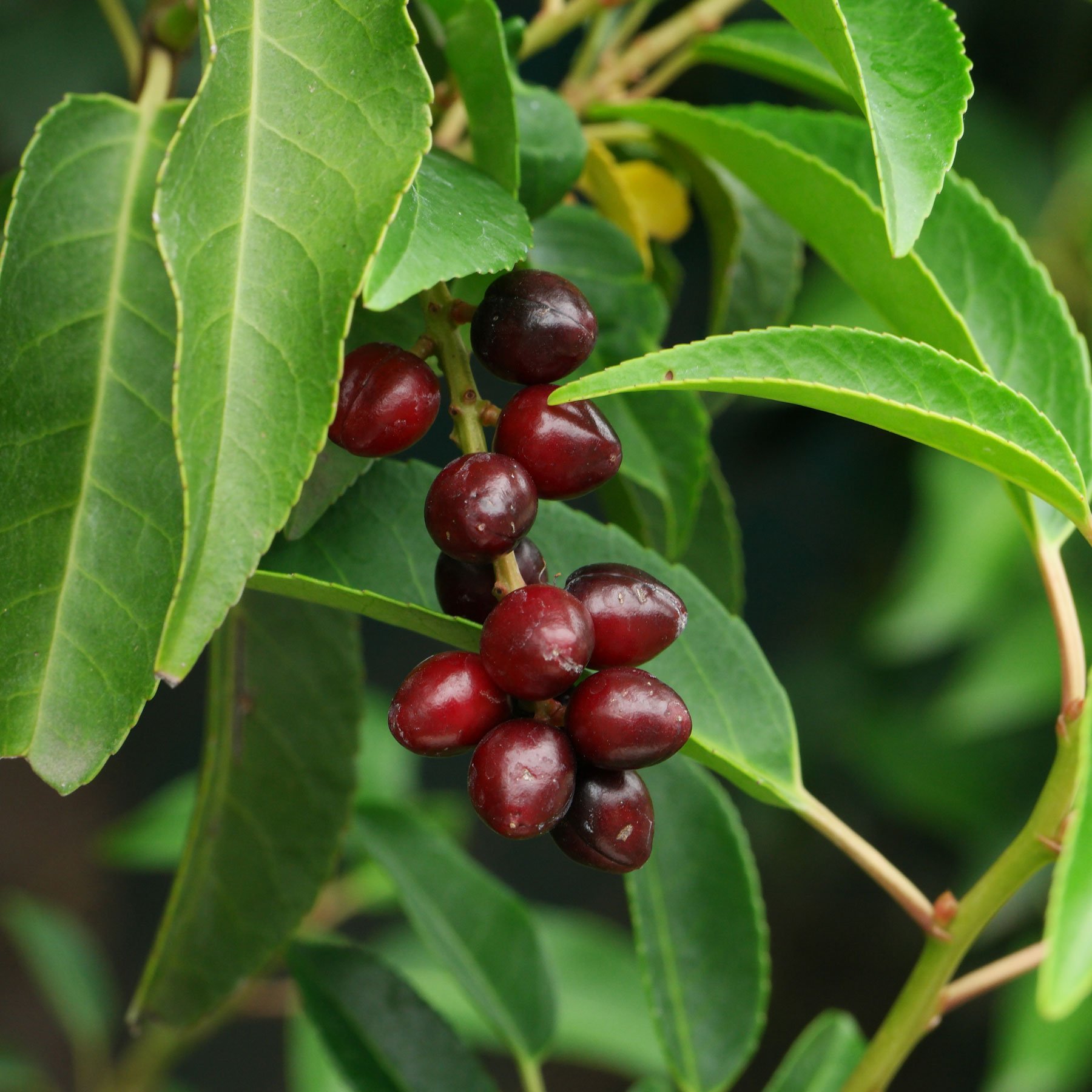
Portugal Laurel, PortugueseLaurel, Portuguese Laurel Cherry
Portugal Laurel is a superb plant for hedges, screens, and windbreaks. Grows up with a dense, spreading, bushy habit to 25 ft. tall (7.5 m) and 15 ft. wide (4.5 m) Recipient of the prestigious Award of Garden Merit of the Royal Horticultural Society and winner of the Gold Medal Award of The Pennsylvania Horticultural Society.

PRUNUS LUSITANICA 'MYRTIFOLIA' SmallLeaved Portugal Laurel Camson Creek Cedars
There the Portuguese cherry laurel occurs sporadically in laurel forests, whereby the wild form is almost extinct. Despite its Mediterranean origin and original environment, the Portuguese cherry laurel is sufficiently hardy and easy-care even in our regions. growth In its homeland, the Portuguese cherry laurel can become a tree up to 20 meters.

Prunus lusitanica 'Angustifolia' Portuguese Laurel 'Myrtifolia' Arundel Arboretum
Prunus lusitanica, also known as Portuguese laurel or Portugal laurel, is a large, evergreen shrub or small tree. It has long, shiny, dark green leaves on dark red stems. Small, white flowers are borne on long racemes in early summer, popular with bees and other pollinators.

portuguese laurel images Norton Safe Search in 2021 Hedging plants, Evergreen hedging plants
Operating Hours Monday to Saturday Lunch: 12 midday to 2:30 p.m. Monday to Sunday Afternoon tea First session: 2:45 p.m. to 4:15 p.m.

Prunus lusitanica 'Myrtifolia' Architectural Plants
Prunus lusitanica, the Portuguese laurel cherry [4] or Portugal laurel, [5] is a species of flowering plant in the rose family Rosaceae, native to southwestern France, Spain, Portugal, Morocco, and Macaronesia (the Azores, Canary Islands and Madeira). [6] [7]
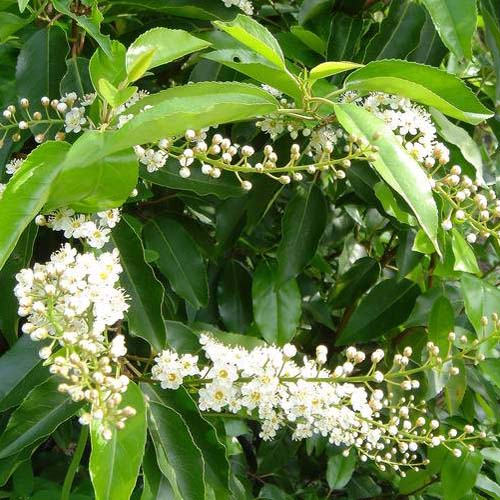
PortugueseLaurel8090cm
Portugal laurel P. lusitanica is a large evergreen shrub or small tree of spreading habit, the dark red shoots bearing deep green ovate leaves. Small, fragrant white flowers in racemes to 25cm in length in early summer, are followed by small, dark purple fruits Other common names cherry bay Portuguese laurel cherry Join the RHS today and save 25%

Portugal laurel planting, pruning and advice on caring for it
Portugal laurel 'Myrtifolia' A neat, dense, rounded or conical, evergreen shrub or small tree with dark green, shiny leaves and sprays of small, white flowers in early summer followed by dark purple berries Synonyms Prunus lusitanica 'Angustifolia' Prunus lusitanica 'Pyramidalis' Join the RHS today and save 25% Join now © visionspictures.com
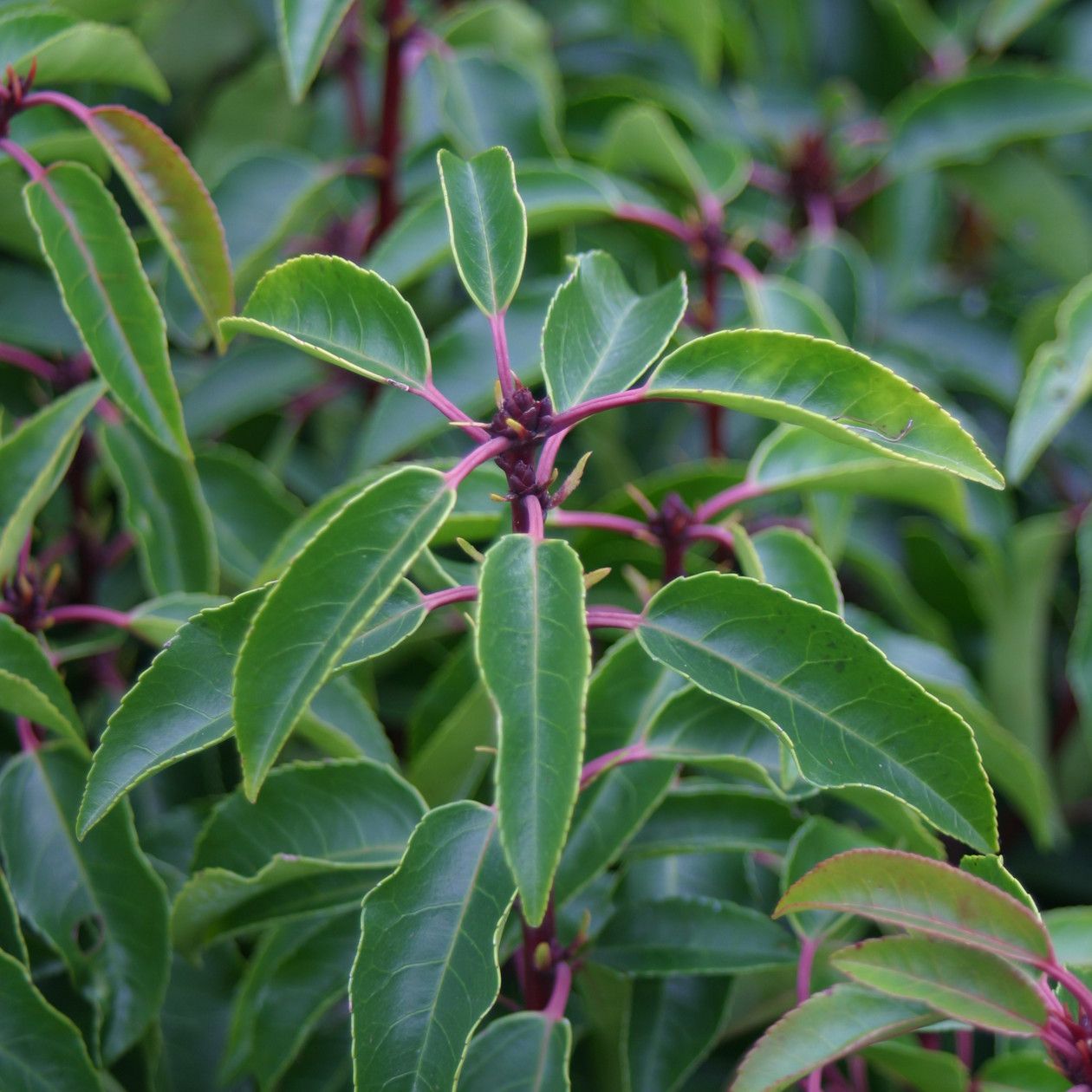
PRUNUS LUSITANICA 'MYRTIFOLIA' SmallLeaved Portugal Laurel Camson Creek Cedars
Description The leaves of the Small-Leaved Portugal laurel are a dark, glossy green around 5 inches long and 2 inches wide. In late spring and early summer the plant will develop beautiful, scented, small white flowers that bloom in spikes. After blooming, the flowers will yield clusters of tiny reddish or dark purple fruit.

Prunus lusitanica Myrtifolia Portuguese Laurel Tree Free Delivery
When planting a Portuguese laurel hedge, space plants at least 60cm apart. Before planting, prepare the soil by adding organic matter such as compost or well-rotted manure to improve drainage and fertility. Dig a hole slightly larger than the root ball of the plant, place the plant in the hole, and backfill with soil.